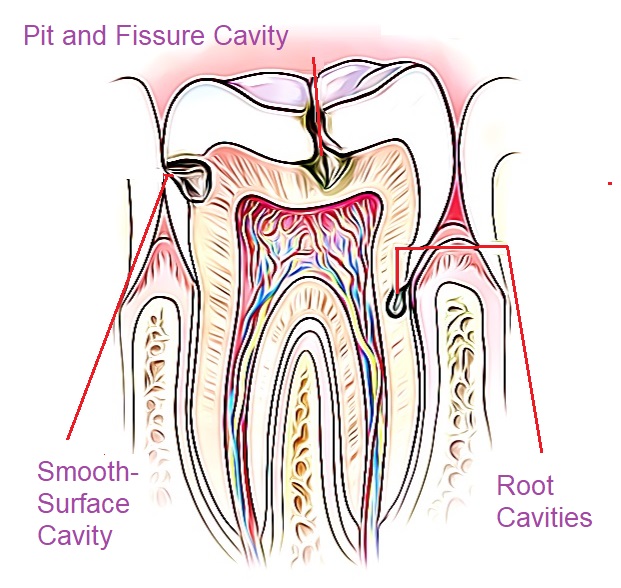What Causes Fillings Pain? Find Relief

The discomfort of fillings pain can be a frustrating and debilitating experience, affecting daily activities and overall well-being. But what exactly causes this pain, and how can you find relief? To understand the root of fillings pain, it’s essential to delve into the world of dental anatomy and the complexities of tooth structure.
Tooth Anatomy and Fillings
A tooth consists of several layers, including the enamel, dentin, and pulp. The enamel is the hard, outermost layer, while the dentin is a softer, more sensitive layer beneath. The pulp, located at the center of the tooth, contains nerves and blood vessels. When a tooth is damaged by decay or injury, a filling is often necessary to restore its structure and function.
There are several types of fillings, including:
- Amalgam fillings: Made from a mixture of metals, including mercury, silver, and tin, these fillings are durable and long-lasting.
- Composite fillings: Made from a tooth-colored resin, these fillings are aesthetically pleasing and can be used to repair teeth in visible areas.
- Gold fillings: Made from gold alloy, these fillings are highly durable and resistant to wear and tear.
- Ceramic fillings: Made from porcelain or ceramic materials, these fillings are highly resistant to staining and can be used to repair teeth in visible areas.
Causes of Fillings Pain
Fillings pain can be caused by a variety of factors, including:
- Tooth sensitivity: When the dentin is exposed, either due to decay or injury, it can become sensitive to temperature changes, sweet or sour tastes, and pressure.
- Nerve irritation: The nerves in the pulp can become irritated during the filling process, leading to pain and discomfort.
- Fillings material: Some people may be allergic or sensitive to certain filling materials, such as amalgam or composite.
- Poor filling placement: If a filling is not placed correctly, it can lead to pain and discomfort.
- Tooth grinding or clenching: Grinding or clenching the teeth can put pressure on the filling, leading to pain and discomfort.
Signs and Symptoms of Fillings Pain
The signs and symptoms of fillings pain can vary depending on the individual and the underlying cause. Common symptoms include:
- Toothache: A sharp or dull ache in the tooth, which can be constant or intermittent.
- Sensitivity: Pain or discomfort when consuming hot or cold foods and drinks.
- Pressure: Pain or discomfort when biting or chewing.
- Swelling: Swelling or inflammation of the gums or face.
Finding Relief from Fillings Pain
If you’re experiencing fillings pain, there are several steps you can take to find relief. These include:
- Desensitizing toothpaste: Using a toothpaste specifically designed for sensitive teeth can help to reduce pain and discomfort.
- Clove oil: Applying clove oil to the affected area can help to numb the pain and reduce inflammation.
- Pain relief medication: Over-the-counter pain relief medication, such as ibuprofen or acetaminophen, can help to reduce pain and discomfort.
- Dental care: Practicing good oral hygiene, including regular brushing and flossing, can help to prevent fillings pain and promote overall oral health.
In some cases, fillings pain may be a sign of a more serious underlying issue, such as an infected tooth or gum disease. If you’re experiencing persistent or severe fillings pain, it’s essential to consult with a dental professional to determine the underlying cause and develop a treatment plan.
Practical Application Guide
To reduce fillings pain and promote overall oral health, follow these practical steps:
- Practice good oral hygiene: Brush and floss your teeth regularly to prevent decay and promote overall oral health.
- Use desensitizing toothpaste: Use a toothpaste specifically designed for sensitive teeth to reduce pain and discomfort.
- Avoid trigger foods: Avoid consuming foods and drinks that can trigger sensitivity, such as hot or cold temperatures, sweet or sour tastes.
- Wear a mouthguard: If you grind or clench your teeth, wear a mouthguard to reduce pressure on your fillings.
- Consult with a dental professional: If you’re experiencing persistent or severe fillings pain, consult with a dental professional to determine the underlying cause and develop a treatment plan.
Step 1: Practice Good Oral Hygiene
Brush and floss your teeth regularly to prevent decay and promote overall oral health.
Step 2: Use Desensitizing Toothpaste
Use a toothpaste specifically designed for sensitive teeth to reduce pain and discomfort.
Step 3: Avoid Trigger Foods
Avoid consuming foods and drinks that can trigger sensitivity, such as hot or cold temperatures, sweet or sour tastes.
FAQ Section
What causes fillings pain?
+Fillings pain can be caused by a variety of factors, including tooth sensitivity, nerve irritation, fillings material, poor filling placement, and tooth grinding or clenching.
How can I relieve fillings pain?
+To relieve fillings pain, you can try using desensitizing toothpaste, applying clove oil, taking pain relief medication, and practicing good oral hygiene. In some cases, fillings pain may be a sign of a more serious underlying issue, and it's essential to consult with a dental professional to determine the underlying cause and develop a treatment plan.
Can I prevent fillings pain?
+Yes, you can prevent fillings pain by practicing good oral hygiene, avoiding trigger foods, and wearing a mouthguard if you grind or clench your teeth. Regular dental check-ups can also help to identify and address any underlying issues before they become more serious.
By understanding the causes of fillings pain and taking steps to find relief, you can reduce your discomfort and promote overall oral health. Remember to practice good oral hygiene, use desensitizing toothpaste, and consult with a dental professional if you’re experiencing persistent or severe fillings pain.